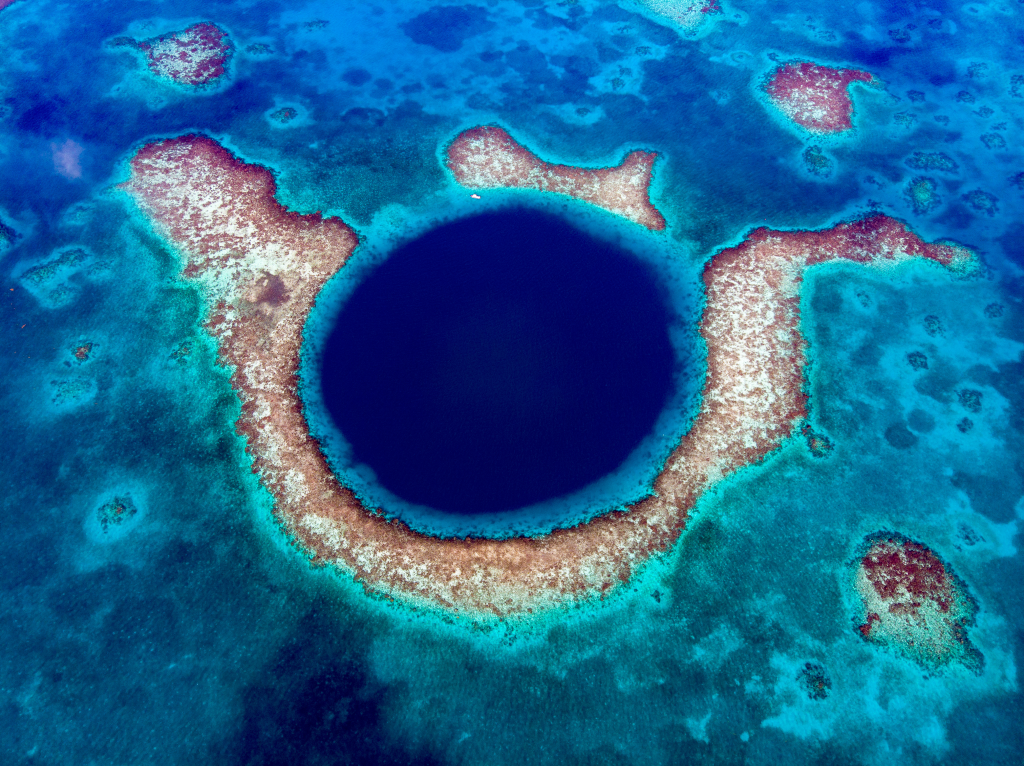
The world’s second-deepest blue hole has been discovered off the coast of Mexico’s Yucatan Peninsula. It is located in Chetumal Bay.
The massive undersea cavern is around 900 feet deep and 147,000 square feet in size.
Despite the fact that the gigantic sapphire sinkhole was discovered in 2021, it was only just described in the scientific journal Frontiers In Marine Science.
Ancient limestone caves dug into the ocean floor can be found in blue holes. These lesser-known inland blue holes are black in appearance and devoid of light due to an accumulation of dead microorganisms from fallen trees and leaves. They look to be little more than wetlands on the surface, yet what lies beneath is astonishing.
“They are largely unknown”, said Christopher G. Smith, a coastal geologist at the U.S. Geological Survey (USGS) who has studied other undersea sinkholes but was not involved in the latest research.
These blue holes, dubbed ‘taam ja’- which means ‘deep water’ in Maya – have minimal oxygen and sunlight on the surface. Even under these conditions, these vast gaps teem with life that has evolved to the low-oxygen environment.
According to the study, it is the second deepest known blue hole in the world, after the Dragon Hole in the South China Sea which is believed to extend down some 980 feet.
The walls of the indigo crater shield the water from the tides.
Blue holes may provide a glimpse into life thousands of years ago. It may also tell us more about life on other planets.
Also read: NASA Shares A Mesmerising Video Of Earth, Netizens React

















